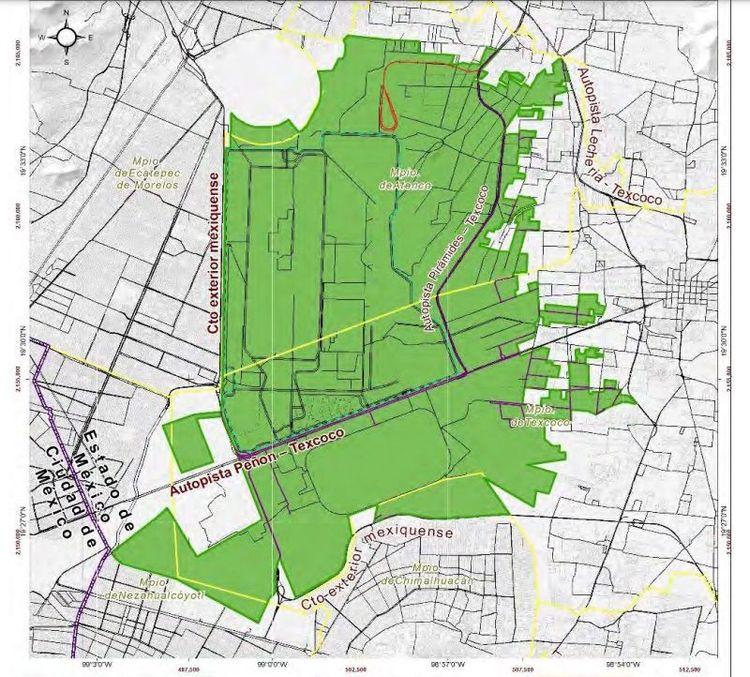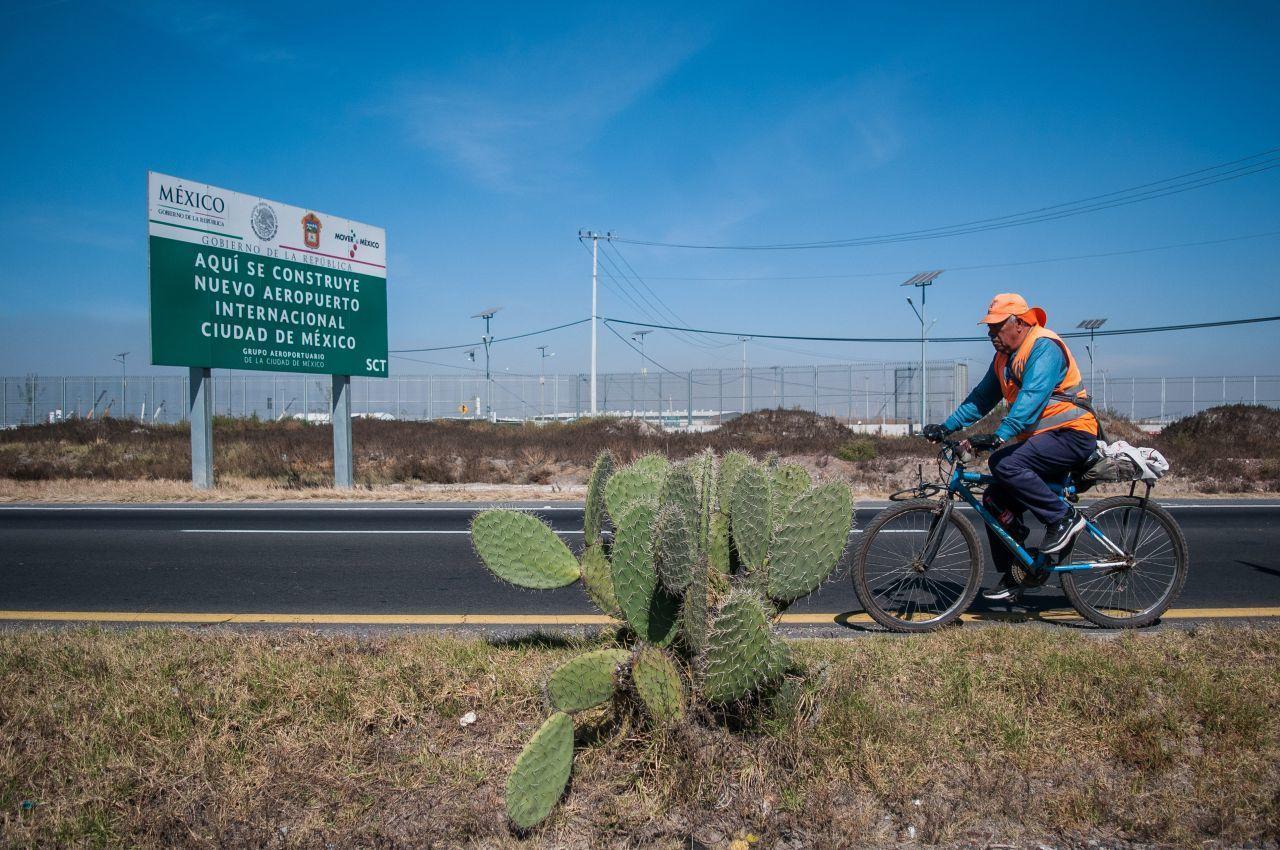For the towns that make up Lake Texcoco, the declaration of a Protected Natural Area (ANP) is only the first step in recovering a wetland that has had environmental effects since colonial times.
This includes recent years with the construction of the New Mexico City International Airport (NAICM), from its announcement in 2014 to its cancellation in 2019.
The project to declare Lake Texcoco ANP is in the first half of the process. In December, the Secretariat of Marine and Natural Resources (Semarnat) published the Prior Justification Study, which proposes 14,038 hectares for protection in the municipalities of Texcoco, Atenco, Chimalhuacán, Ecatepec and Nezahualcóyotl, in the State of Mexico.
The work also chose the category of Natural Resources Protection Area because of the importance of conserving water in the face of the drying crisis in the nine rivers that flow into the lake, caused by the effects of mining, deforestation, drainage works and construction of megaprojects, as stated in the Study.
At the beginning of January, the public consultation was held where the National Commission for Protected Natural Areas (Conanp) collected opinions, comments and proposals that will be considered before drafting the official decree.
“The fight against lake desiccation begins a phase of building a different model of life with respect to water. It won't end with the declaration, a management plan is coming and that's a job. The damage in some cases is irreversible, but in others it can be compensated through reforestation and agriculture programs,” said César Del Valle, a member of Manos a la Cuenca.
Manos a la Cuenca is a project that emerges from the People's Front for Land Defense (FPDT) of San Salvador Atenco and the #YoPrefieroElLago People's Coordinator, where residents from other affected municipalities such as Texcoco and Atenco participate.
In the community, they promote assemblies, investigations, monitoring and documentation, from which the proposal for the Management Program for Protected Natural Areas of Mexico, also known as the “management plan”, emerges.
These programs contain the guidelines supported by Conanp to establish what will be the conservation strategies, as well as those of use, for the ANP once they have been enacted.
The Manos a la Cuenca proposal seeks to prohibit human activity in the most affected part, known as the core zone, and to locate areas with optimal environmental characteristics for sustainable agriculture.
“We call them agricultural areas of high environmental value that would work with a perimeter barrier to what would be the core area. That they work under a mechanism that allows farmers to have income and agricultural strengths so that they can continue to survive,” Del Valle explained.
Agriculture on Lake Texcoco, he added, has become an activity without resources, so its inhabitants decide to migrate to other places to work and sell the hectares to owners of projects that could facilitate urbanization and extractive activities such as mining. On this account, promoting agriculture means maintaining environmental care.
” It's not a situation that we say only affects or benefits ejidatarios or peasants, it goes much further than that. We are talking about environmental issues, about water resources. What is sought in this process is to protect and guarantee the right to water for future generations,” he said.

Delimitation of the ANP. Source: Prior Justification Study for the declaration of the Lake Texcoco Natural Resources Protection Area.
The damage review
Lake Texcoco began its environmental decline since the conquest in 1521, when the Spanish rebuilt the hydraulic infrastructure, whose deficiencies documented in the works led to the beginning of a drying process.
In 2001, the government of President Vicente Fox announced the construction of a new airport for Mexico City. It was decided to develop the project in the federal area of Lake Texcoco, despite the denials of environmentalists and researchers who, since the 1960s, had been evidencing the water crisis in the Mexican basin.
The dissatisfaction reached the mobilizations that ended in clashes between ejidatarios and the Federal Preventive Police during that year. The project was suspended in August 2002, one month after the death of José Espinoza Juárez, a resident of Texcoco who participated in the protests.
It was until September 2014 that President Enrique Peña Nieto announced that NAICM would be promoted again.
“The construction of infrastructure (roads, parking lots, access roads, hotel and commercial areas) will seal with cement an important area of infiltration and recharge of rainwater, so important for mitigating the water crisis that condemns Mexico City and the Metropolitan Area. “, said Greenpeace at the time.
Some other environmental impacts that were listed were poor air quality, increased greenhouse gas emissions, fossil fuel burning by airplanes and affecting the habitat of migratory and shorebirds.
In addition, Lake Texcoco works as a regulator of possible floods in the Valley of Mexico.
The Prior Justification Study published in December confirms some of the consequences of the construction of the airport. Notable are the drying up of the Xalapango, Texcoco Norte, Cola de Pato lagoons and part of the San Juan Ciénega due to the construction of a collector channel; and the devastation of 60 hills in 15 municipalities.
For its part, the Manos a la Cuenca project has also spoken with authorities from Semarnat and Conanp to consider the damage caused by complementary works that came with the airport project, for example, the authorization of mines in the region.
“The lake area is always the most visible, but we know that the effects are also in the upper part of the basin, and that is what is being reviewed (in the project), which protection figures may be more appropriate. [...] We continue to insist on also dismantling all those projects that arrived with the airport,” added César Del Valle.
The next steps
While the procedure for the decree continues, the affected communities that make up the Manos a la Cuenca project are working on planning activities to maintain Lake Texcoco and surrounding regions.
In places such as Santa María Tecuanulco, the proposal for a reforestation program is being analyzed, while community organizations such as Guardianes de los Ríos monitor the water situation.
“The inertia of lake desiccations has been constantly being fought against. We are at this point in history that if we can stop that, that dispossession of water, that dispossession of our ways of life as lagoons, we will be stopping more than 500 years of desiccation,” said Del Valle.
In December 2021, the head of Semanart, María Luisa Albores, indicated that the approach was to be able to have that decree on February 24.
However, in a conversation on January 13 with the Radio of the Autonomous University of Chapingo, biologist Gloria Tavera, director of the Central Region and Neovolcanic Axis of Conanp, explained that the drafting of the official decree would only begin, with spaces for the exchange of information with sectors involved before it was signed by President Andrés Manuel López Obrador.
Until the close of this publication, said ANP has not yet been declared.



Comentarios (0)